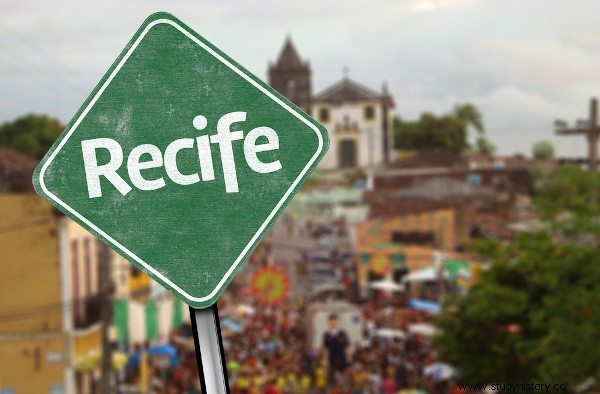The Manguebeat Movement was developed in Recife, capital of the state of Pernambuco, from 1991, and consisted of a “cultural scene ”, especially a musical style, which mixed elements of Pernambuco's regional culture, such as rural maracatu , with pop culture , especially rock'n roll and hip-hop .
Manguebeat has also developed its own way of visually expressing this mixture . The use of the straw hat, typical of Pernambuco culture, combined with pop culture accessories, such as sunglasses, printed shirts, sneakers and colored necklaces, produced an accentuated visual effect on its members.
Also read: Music festivals in Brazil – events that gave voice to important artists
Manguebeat Creators
Themain creators of the Manguebeat scene were:
-
Chico Science,
-
Fred Zero Four,
-
Renato L,
-
Mabuse,
-
Héder Aragão.
They were joined by Jorge du Peixe, Pupilo, Lúcio Maia, Toca Ogan, Gilmar Bola 8, Gustavo da Lua, Otto, among others.
Manguebeat Origin
The term “manguebeat” is the result of a junction of the word mangrove , which designates a typical ecosystem of the coast of Northeast Brazil and the city of Recife, with the word beat from English , which means beat – but which also refers to the language of binary codes used in computing:beat, bits.
The crab , way of life typical of the mangrove (or the mud of the mangroves), which is captured and sold by workers in the region, has become the symbol of the Manguebeat . In fact, the main manifesto of this cultural movement, written by Fred Zero Quatro, is entitled “Crabs with a brain”.

The name manguebeat intended to make the proposal of this manifesto clear. In it, Zero Quatro states that the “arteries” of Recife’s culture were “blocked”, that Recife “was dying” economically and culturally and that, therefore, it was necessary to revitalize the city’s culture, mixing the traditional with the modern. . In the following excerpt, the author's proposal is clear:
“Today, the s mangueboys and manguegirls are individuals interested in hip-hop, the collapse of modernity, Chaos, attacks by marine predators (mainly sharks), fashion, Jackson do Pandeiro, Josué de Castro, radio, non-virtual sex, sabotage, music street, ethnic conflicts, media, Malcolm Maclaren, The Simpsons and all advances in chemistry applied to the field of alteration and expansion of consciousness.” (Excerpt from “Crabs with Brains”).
The main regional influences from Manguebeat, as highlighted in the excerpt of the manifesto above, were Jackson do Pandeiro and Josué de Castro, but also Mestre Salustiano, Ariano Suassuna and Quinteto Armorial.
See also: What is the origin of samba?
Main bands of the Manguebeat Movement
The main bands that led this movement in Recife were:
-
Chico Science and Nação Zumbi, led by Chico Science,
-
Mundo Livre S/A, led by Fred Zero Quatro.
These two leaders, above all Chico Science (Francisco de Assis França) – who died prematurely in 1997, at the age of 30 – showed great capacity for articulation in the midst of cultural traditions Northeast . Chico Science has incorporated many elements of rural maracatu into his music, both in melodic components and lyrics, in addition to frequently performing in the colorful caboclo costume of maracatu.

In the following verses extracted from the song “Manguetown”, by Chico Science &Nação Zumbi, it is clear the group's dissatisfaction with the precarious situation of Recife in the 1990s . The city is referred to in the lyrics of the song as “manguetown”.
I'm in the mud
It's a dirty neighborhood
Where the vultures have homes
And I don't have wings
But I'm here in my house
Where vultures have wings
I'm painting holding the mangrove walls in my backyard
Manguetown
Walking through the alleys
Walking in collectives
No one escapes the dirty smell
From the mud of Manguetown
The “dirty smell” of the mangrove, “ubiquitous” in the city, was the metaphor that manguebeat found to open wide the problems of Recife and the Northeast . In the second half of the 1990s, representatives of this movement had already managed to expand their art throughout Brazil, as well as to other regions of the world.
